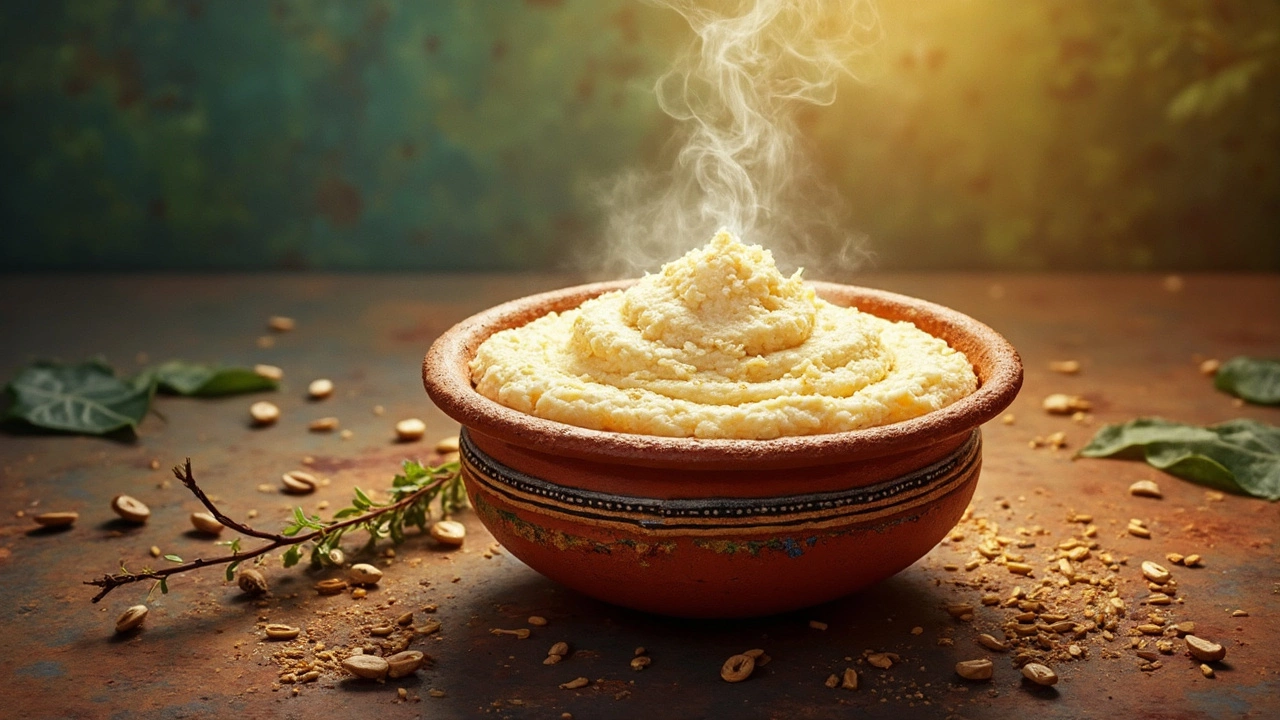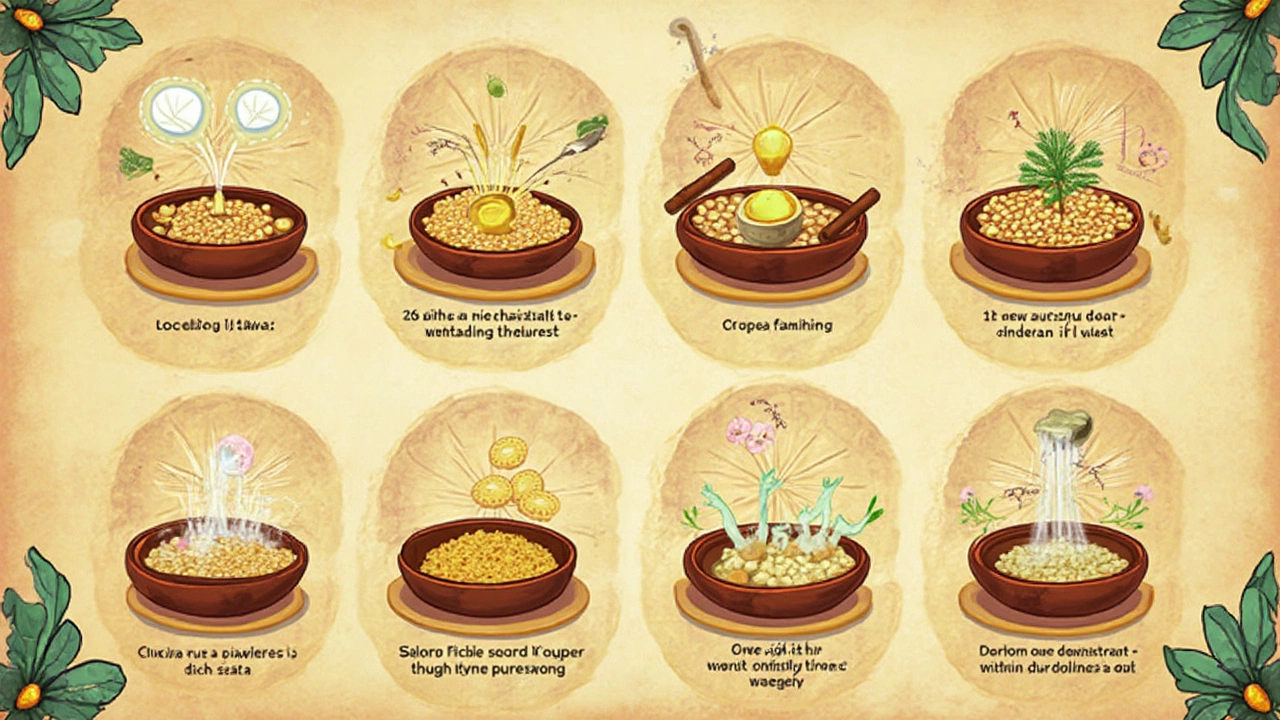Quick Hacks for Fermenting Dosa Batter in Less Time
 Feb, 14 2025
Feb, 14 2025
Fermenting dosa batter can feel like waiting for paint to dry, but it doesn't have to be. There's a bunch of ways to speed things up if you're like me and can't wait to dig into those crispy, golden dosas. One quick fix? Temperature control! Keeping your batter warm can speed up the process without magic or fancy gadgets.
Here's another neat trick: add a pinch of sugar. It acts like a little treat for the yeast, getting it all hyped up and working faster. Just don’t go on a sugar trip—keep it minimal, just enough to do the job.
Ever heard about using methi seeds? Not only do they enhance the batter’s smoothness, but they also boost fermentation. Soak a tablespoon of these little powerhouses along with your rice and urad dal. You'll be surprised at the difference!
- Understanding Fermentation
- Using the Right Ingredients
- Controlling Temperature for Faster Results
- Innovative Kitchen Tools and Techniques
- Avoiding Common Mistakes
Understanding Fermentation
Fermentation is the magical process that turns a mix of rice and urad dal into the soft, spongy batter that's the heart of any good dosa. It's all about breaking down sugars and producing that slight tangy flavor we love in dosas. Yeast and bacteria do most of the job. They're kind of like the chefs behind the scenes, working tirelessly to get that beautiful rise.
The Role of Yeast and Bacteria
So, what do yeast and bacteria really do? When you mix rice and dal, you're creating the perfect environment for these guys. They munch on the sugars present, and in return, release carbon dioxide, which gives the batter its airy texture and volume. To put it in kitchen terms - they're the real-life bubble blowers!
Optimal Conditions for Fermentation
Fermentation thrives in warmth. That's why in Indian households, you often find the batter near the stove or wrapped in a blanket during colder months. The idea is to keep it cozy, around 30-32°C (86-89°F), so those microbes are in full swing.
What's Affecting Fermentation Time?
Your environment plays a huge role. In hot and humid places, dosa batter ferments faster than in chilly locations. Water quality can also impact readiness. If your tap water is too chlorinated, it might slow things down. So, always use filtered water if possible.
| Factors | Effect on Fermentation |
|---|---|
| Temperature | Warmer climates speed it up |
| Humidity Level | High humidity benefits fermentation |
| Water Quality | Filtered water favors a quick rise |
Armed with this knowledge, gauging and tweaking the fermenting dosa batter process becomes way simpler. And the result? Tasty dosas with less waiting around!
Using the Right Ingredients
Getting the right mix for fermenting dosa batter is like having the perfect playlist for a long drive – it just makes everything better. Your main players are rice and urad dal, but there's more to it than just tossing them into a bowl. The type of each ingredient matters.
Choosing Your Rice
Take rice, for instance. It's tempting to use any old bag you have lying around, but opting for parboiled rice can work wonders for a quick fermentation. Why? It's because of its semi-cooked status which contains more moisture, aiding the fermentation journey.
Special Power of Urad Dal
Then there's urad dal. Whole, husked dal is usually the go-to for many folks, but split urad dal works just as well and might even speed things up since it mixes faster. Some dosa enthusiasts swear by adding a hint of chana dal for that extra crunch and quicker fermentation boost!
Adding Fenugreek Seeds
F. Kurien, a renowned food scientist, once said, "
Fenugreek seeds not only enhance the flavor but significantly expedite fermentation due to their natural enzyme content." So, not incorporating them might mean leaving flavor (and time) on the table!
Say No to Overdoing
But remember, simplicity is key. Overloading with too many extras can backfire, turning your batter into a confusing mix. Stick to the basics and a couple of tweaks for the best quick dosa fermentation results.
Next time you're preparing your batter, think of the ingredients as a well-oiled team where each member plays its part. Get this lineup right, and you'll be closer to that perfect dosa experience.

Controlling Temperature for Faster Results
Temperature is like your batter’s best friend when it comes to kickstarting the fermentation process. If you get it right, you can shave off hours from your wait time.
Using Warm Environments
If you live somewhere with a naturally warm climate, you're already in luck. But for those colder times, think of your oven as a cozy nook. Just switch on the oven light and place the bowl of dosa batter inside. It's a sweet spot—not too hot but perfectly warm. Remember, do not turn on the oven; we want warmth, not baking!
The Water Temperature Trick
Here’s a handy hack: use lukewarm water when grinding your rice and urad dal. It nudges the fermentation gently, creating the ideal environment for those bacteria to work their magic.
Rely on Science - The Optimum Range
Aim to keep your batter at a steady 30-35°C (86-95°F). It's where fermentation happens the fastest. Investing in a kitchen thermometer could be a game changer to keep an eye on things. When the room temperature drops too much, consider wrapping your bowl in a thick cloth to keep it snug and warm.
| Optimal Temperature | Fermentation Time |
|---|---|
| 30°C (86°F) | 8-10 hours |
| 35°C (95°F) | 6-8 hours |
Keeping these temperature hacks in mind can save your sanity and deliver delicious dosa on the table without the eternal wait.
Innovative Kitchen Tools and Techniques
When it comes to speeding up the fermentation of dosa batter, the right tools can make all the difference. Let's dive into some gadgets and tricks that can cut down the waiting time and make your cooking process more fun and efficient.
Use an Instant Pot
If you own an Instant Pot, you've just found your new best friend for quick dosa fermentation. Set your batter inside the pot, and use the 'Yogurt' setting. This maintains a warm temperature perfect for speeding up the fermentation process without cooking it. Just cover it with the Instant Pot lid, no sealing needed.
Heating Pad Magic
A simple heating pad is another game-changer. Place your covered bowl of batter on a heating pad set to low. This provides a consistent warmth that acts as a catalyst for faster fermentation. Make sure you put a towel in between if things get too toasty.
Experimenting with Fermentation Containers
Glass jars or BPA-free plastic containers with lids are great for fermenting dosa batter. They trap warmth and can be placed in a warm spot in your kitchen. Some people even swear by placing a couple of clean coins in the jar; weird, right? The theory is the metals help in better enzyme activity. Who knew?
DIY Probiotic Boost
If you're feeling adventurous, or just a fan of science-y experiments, add a spoonful of plain yogurt or buttermilk to your batter. This gives the batter a probiotic boost, kicking those natural cultures into high gear. Mother Nature lending a hand, if you will!
These tools and techniques are all about using what you have in the kitchen to speed things up organically. Remember, the goal is to keep it simple, keep it tasty, and, most importantly, keep you cooking with enthusiasm!

Avoiding Common Mistakes
Fermenting dosa batter sounds simple, right? However, there are some hiccups you might hit if you're not careful. These slip-ups could slow you down or throw off your quick dosa fermentation game.
Don't Skimp on Soaking Time
The first biggie is not letting your grains and dal soak long enough. We're talking about a good 4 to 6 hours soak where the magic begins. This soaking step is just as important as fermentation itself.
Temperature Matters
Next, watch your temperatures. Too cold, and you'll feel like you're waiting forever. Too hot, and you're dealing with over-fermentation. Aim for a cozy room temperature around 25-30°C (77-86°F). That's the sweet spot for quick results!
Don't Overlook Water Quantity
The water you use in your batter is a game-changer. Too much liquid can make it watery, and it won't ferment well. Conversely, too little, and it's too thick, making it hard for the yeast to work its magic. The batter consistency should be similar to a pancake batter—thick but pourable.
Storage Strategy
How you store your batter during fermentation is key. Cover it with a lid but not airtight. This allows the gases to escape while keeping everything clean inside.
Remember these pointers, and you’ll sail through fermenting dosa batter like a pro!